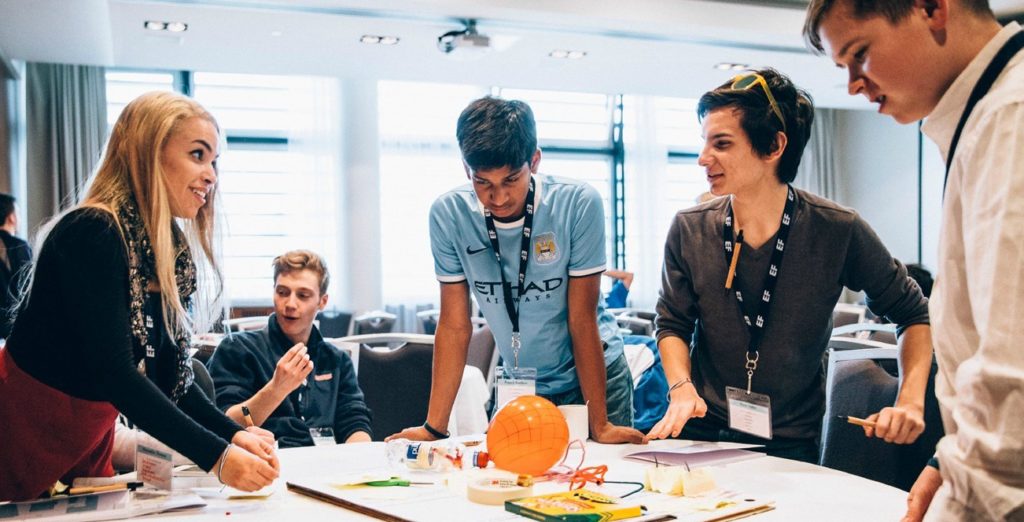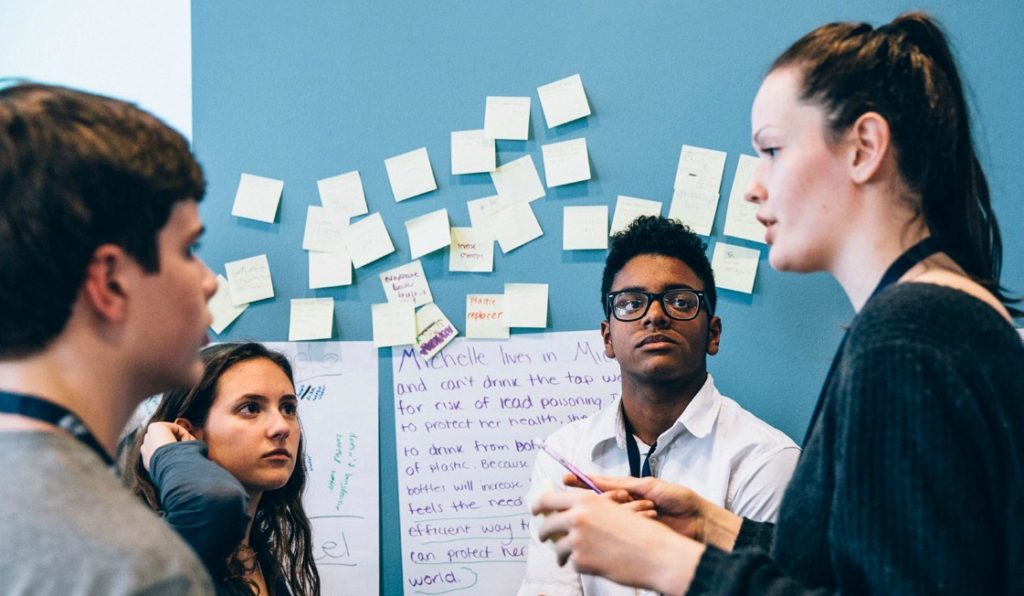You’re capable of anything if you put your mind to it.
As cliché as that sounds, the students attending our latest Global Student Leaders Summit proved it to be as true as ever. High school students attending the Summit learned about the future of energy while present in what some consider the clean energy capital of the world – Reykjavik, Iceland. After being inspired by talks from influential speakers like Nobel Prize laureate and former U.S. Energy Secretary Dr. Steven Chu, students from different states and nations broke off into groups to collaborate on a hands-on challenge.
At the Innovation Village, Summit attendees were tasked with solving problems surrounding energy conservation. The Design Thinking process was put into motion, as students discussed renewable energy, drawing on personal experience and ideas introduced at the Summit. These discussions lead to identifying a problem, towards which students then worked to develop a solution – complete with a prototype.
We picked some Innovation Village pitches to share with you here – which was hard to do because they were all incredibly impressive! But first, here’s a quick breakdown of some of the concepts the students worked into their designs:
Renewable energy – energy that comes from natural resources, such as the sun, wind, or rain
Piezoelectricity – electricity that is produced when pressure is applied to receptors
Hydroelectricity – type of power generated from the kinetic energy of naturally falling water
Thermal energy – energy that comes from heat
Imagine your students’ work featured next to that of Nobel Prize winners. Through our collaboration with the Nobel Prize Museum, we’re building exciting opportunities for students to pursue bold goals and dare to think differently. Learn more here.
Now, prepare to be amazed…
1. Malaria Water Filter (Judge’s Choice)
The Problem: After speaking to a medical intern from India, Team 37 learned about a serious obstacle that malaria researchers are currently facing. Power outages are very common during the monsoon season in India. When an outage occurs, the incubators holding malaria samples shut down causing the samples to go bad and their research to be set back by months.
The Solution: Team 37 designed a water tank that makes the monsoon season work in favor of the researchers. The mouth of the tank is surrounded by piezoelectric panels, funneling rain water into the tank while harnessing power from the fall of the rain. The rain water then passes through blinds and mesh covering the tank, there to make sure that the water coming in is free of debris. Once full, the tank empties down a tube into a filter, leaving us with a wealth of hydroelectric clean energy and clean water – an added bonus. So let’s review, shall we? Rather than being set back by the monsoons, Team 37 uses the rain to create clean energy that will keep research labs plugged in during power outages! Pretty cool, huh?
2. The Plug (People’s Choice)
The Problem: We’re all guilty of falling asleep with the lights on every once in a while. It’s inevitable – but that doesn’t make it okay. As we sleep, those lights that we left plugged in are using energy and emitting small amounts of light pollution. Over time, all this wasted energy certainly adds up.
The Solution: Meet The Plug, a smart design that does way more than your typical socket. You can program this device to turn off and on at any time. Set the dial for whenever you plan on falling asleep and The Plug will automatically break the circuit, turning off the light. Need to be up before the sun in the morning? No problem – you can also set a time for the light to turn back on. The Plug was designed with travel in mind, featuring removable sockets. Wherever you go, energy saving will follow!
3. The Shower Cycle
The Problem: You know what’s awesome? Taking a nice, long, hot shower. You know what’s not awesome? Wasting a bunch of water and energy so you can take that shower.
The Solution: The Shower Cycle uses renewable energy to solve this problem in three easy steps.
1) The sun heats a mirror, which turns the sun’s energy into solar power that can be used to heat the water.
2) As the water travels through pipes containing turbines, its movement is used to produce hydroelectricity.
3) Instead of the water going straight down the drain, it flows through a filter so it can be recycled for the next shower.
With the Shower Cycle, you can shower for as long as you’d like without feeling guilty!

4. The Energy Control Panel
The Problem: Household utilities and appliances use up a TON of energy and cost a lot of money to power. We typically don’t keep track of our energy usage, and don’t know how much we’re paying for it until the monthly bill arrives.
The Solution: The Energy Control Panel allows you to track your entire home’s energy usage. This device will spotlight each utility – heating, lighting, plumbing, appliances etc. – and let you know how many kilowatts of energy it’s using, and exactly how much it’s costing you. That way you can budget both your energy usage and financial cost.
5. We Go Electric – Shoe Insert and Glove
The Problem: Even though charging your phone is a daily energy drainer, there’s no way around it. And who else gets super annoyed when your phone is about to die, but there are no sockets around to charge it?
The Solution: We Go Electric is a hypothetical brand whose products guarantee a place to charge your phone, and that it will be charged using 100% clean energy. Their shoe insert and glove are built with thermal and piezoelectric sensors, generating usable energy from your body’s heat and movements. This energy flows through the charging chord attached to the glove or shoe insert and right into your phone!

We know, we know – these ideas are 100% innovative and 150% ingenious. And they were all brought to you by high school students who had been strangers to one another when their Innovation Village teams originally formed. When you combine creativity, collaboration, and problem-solving, the possibilities are endless!
Imagine your students’ work featured next to that of Nobel Prize winners. Through our collaboration with the Nobel Museum, we’re building exciting opportunities for students to pursue bold goals and dare to think differently. Learn more here.
Related articles
